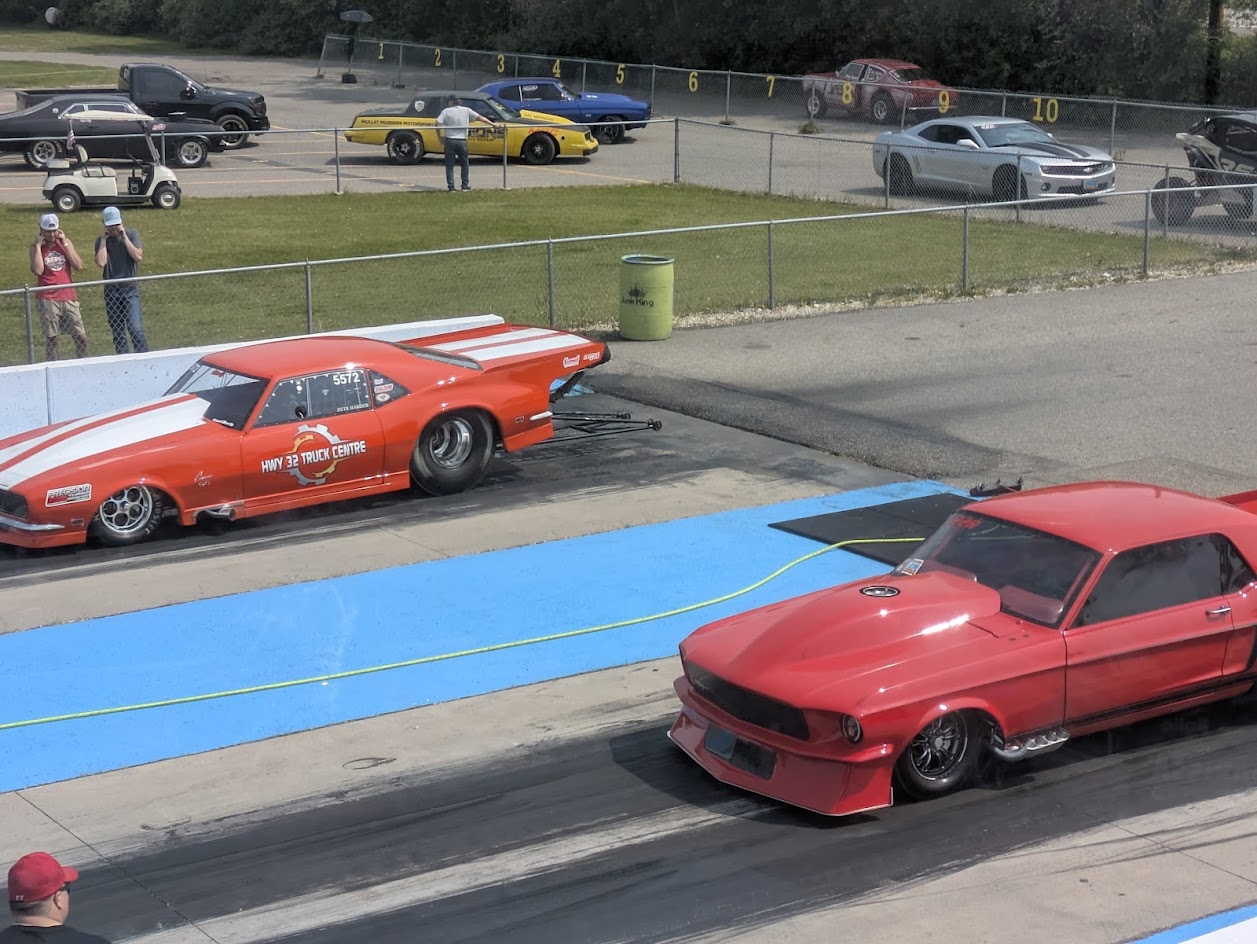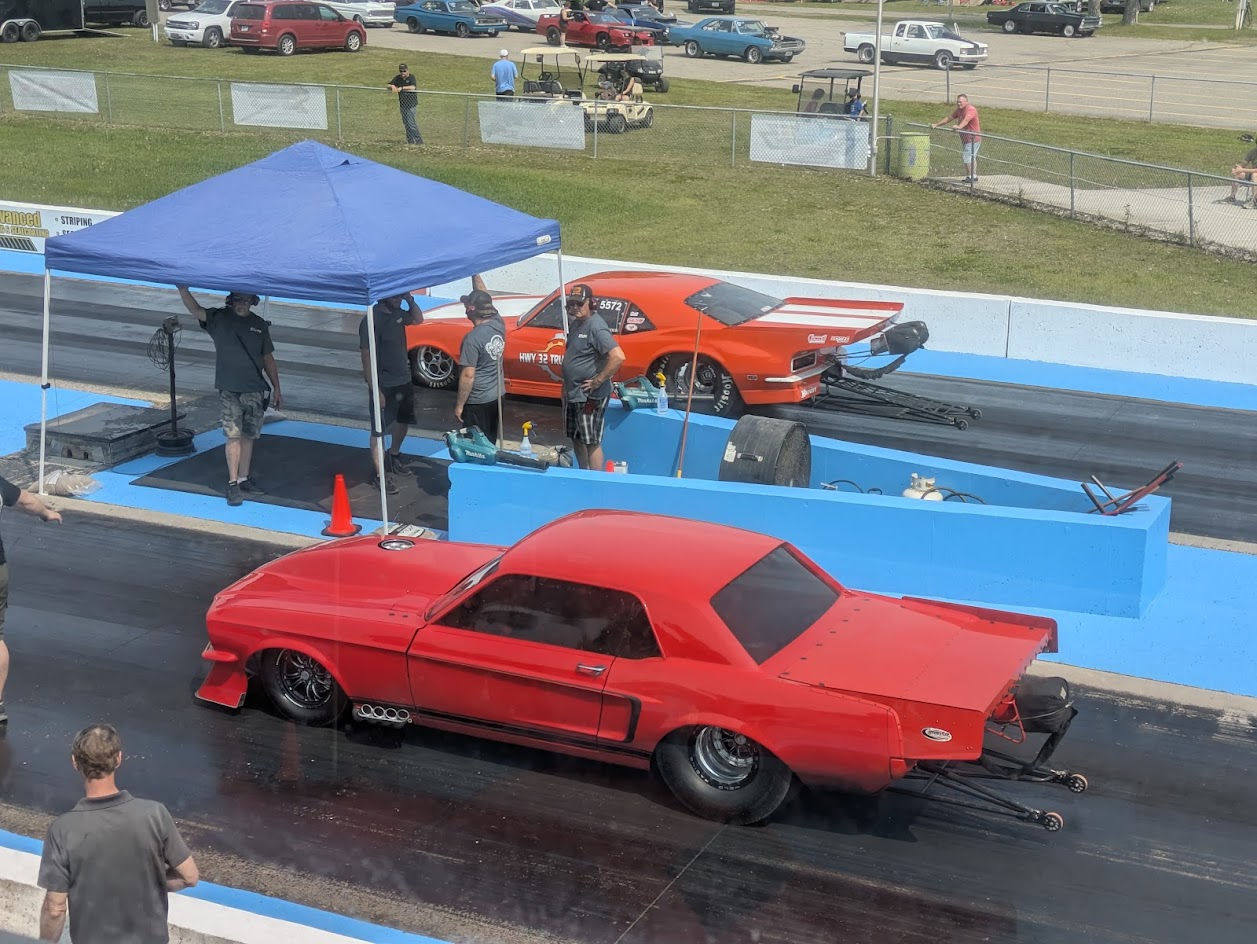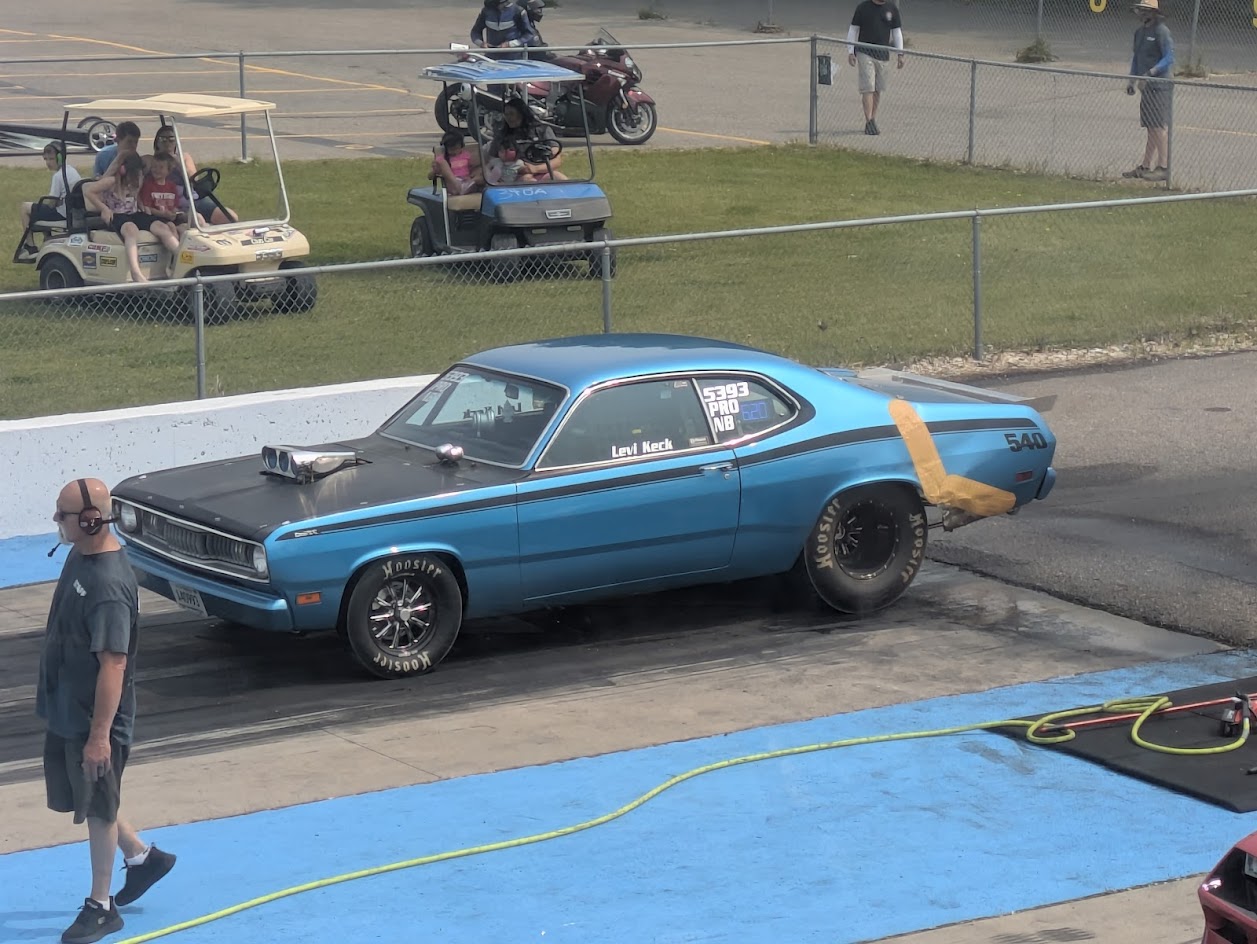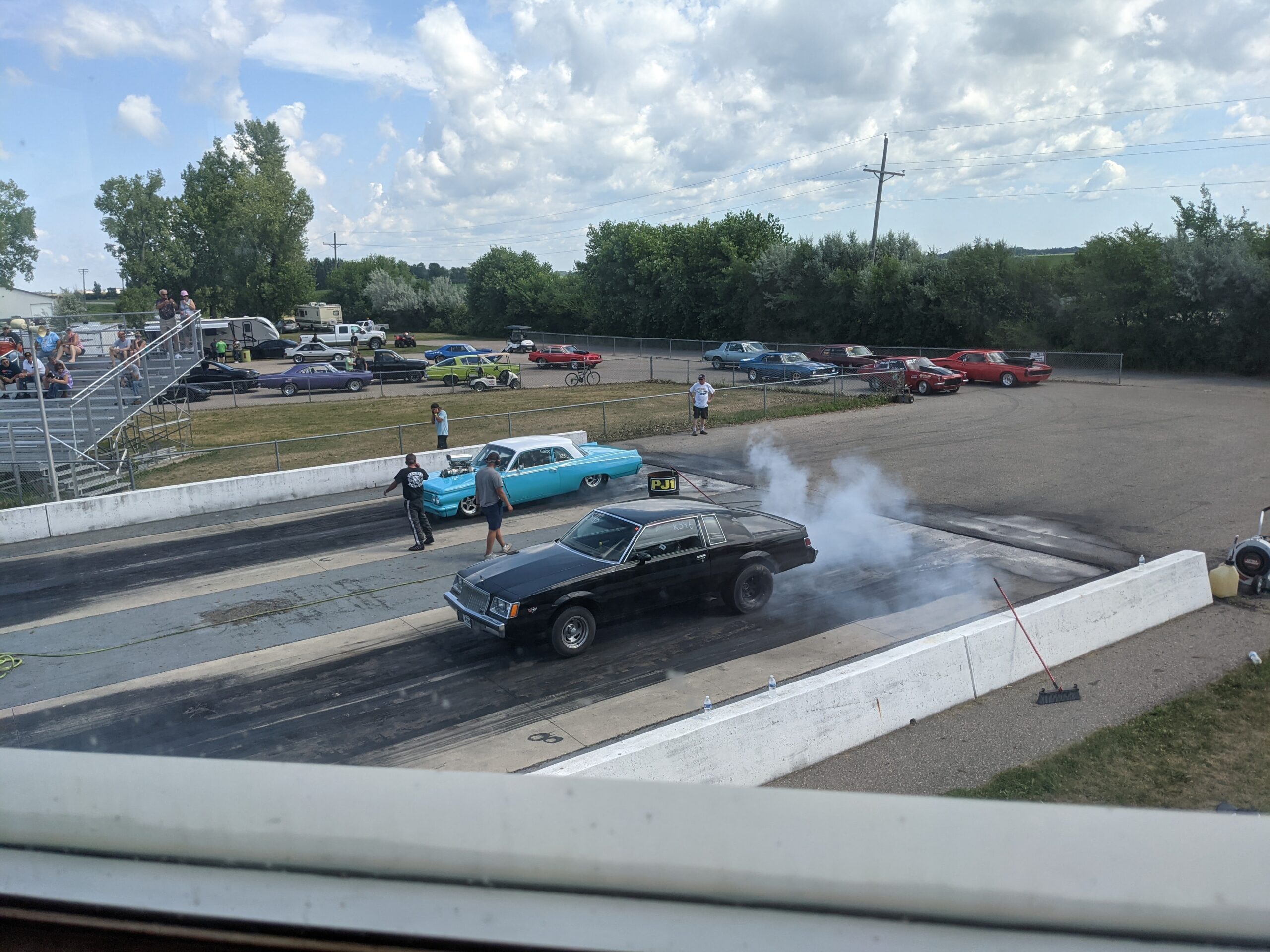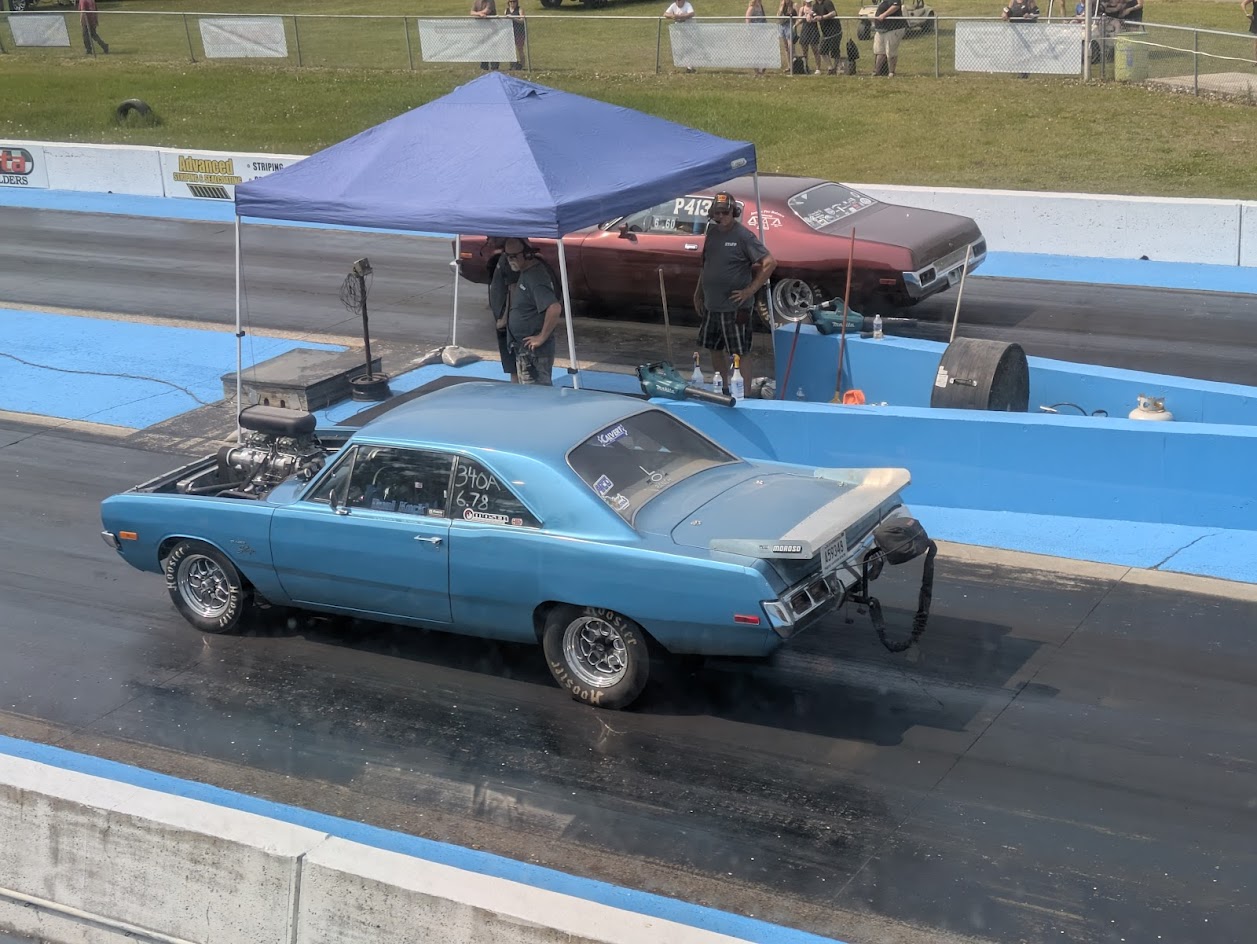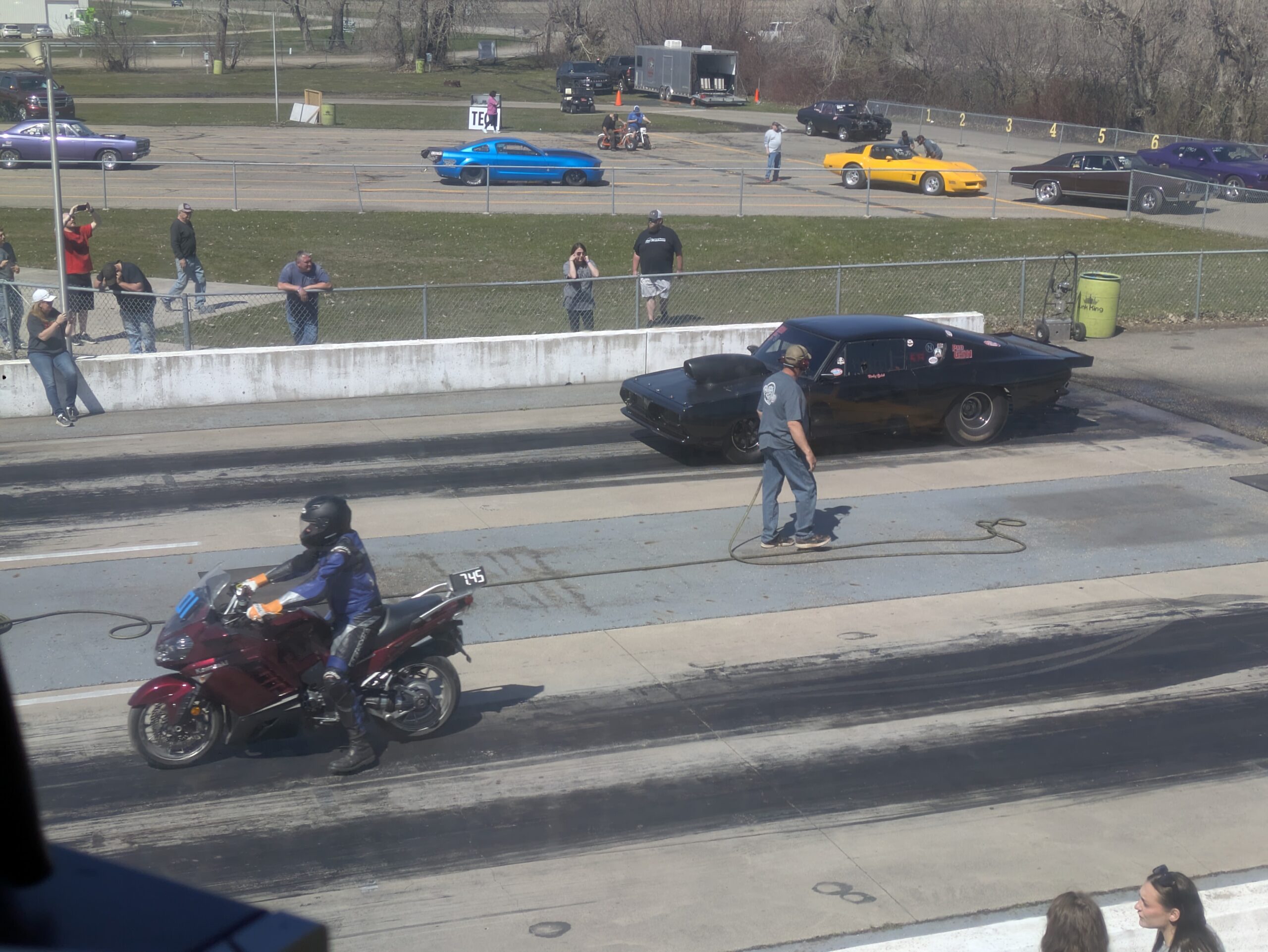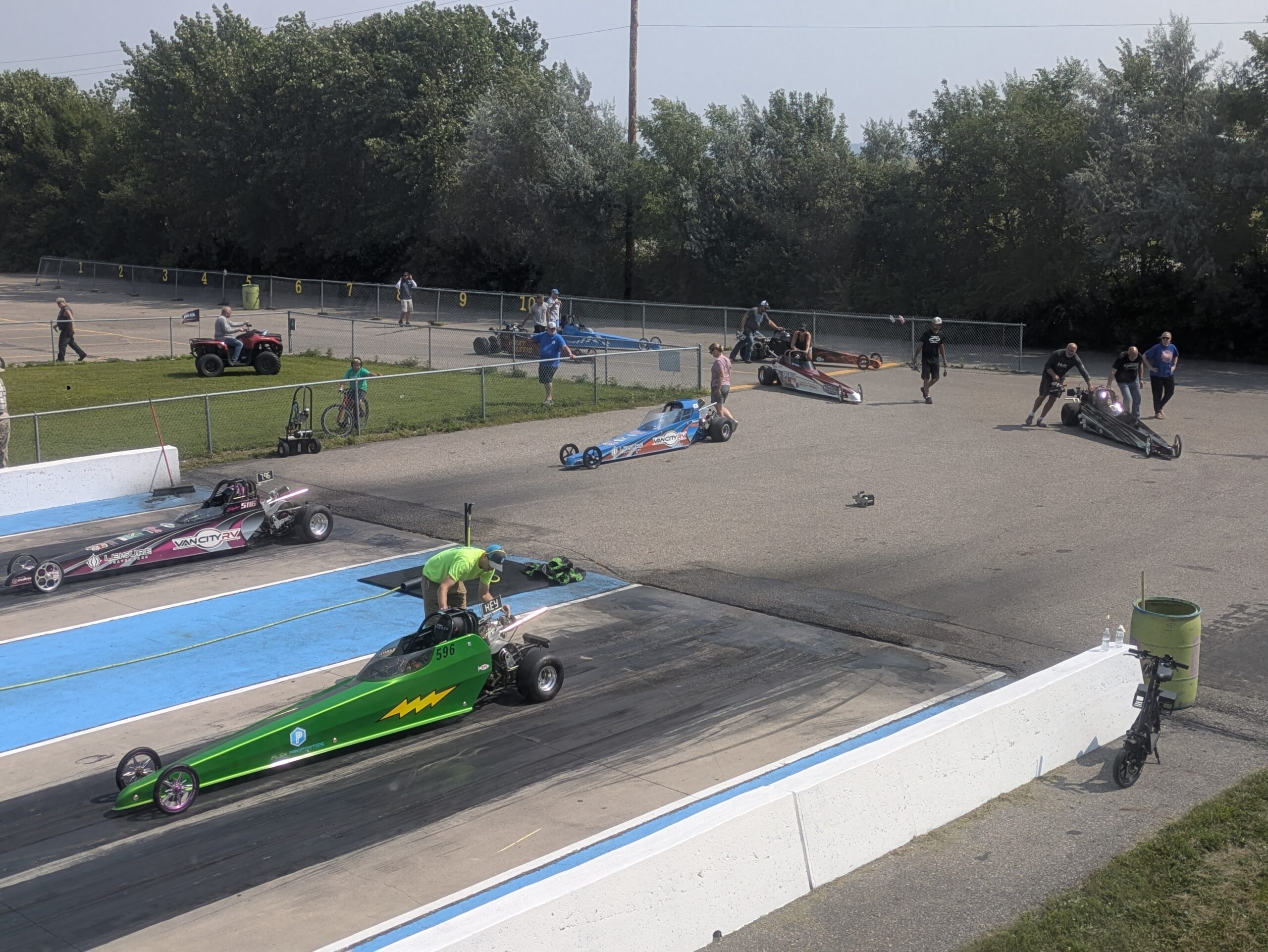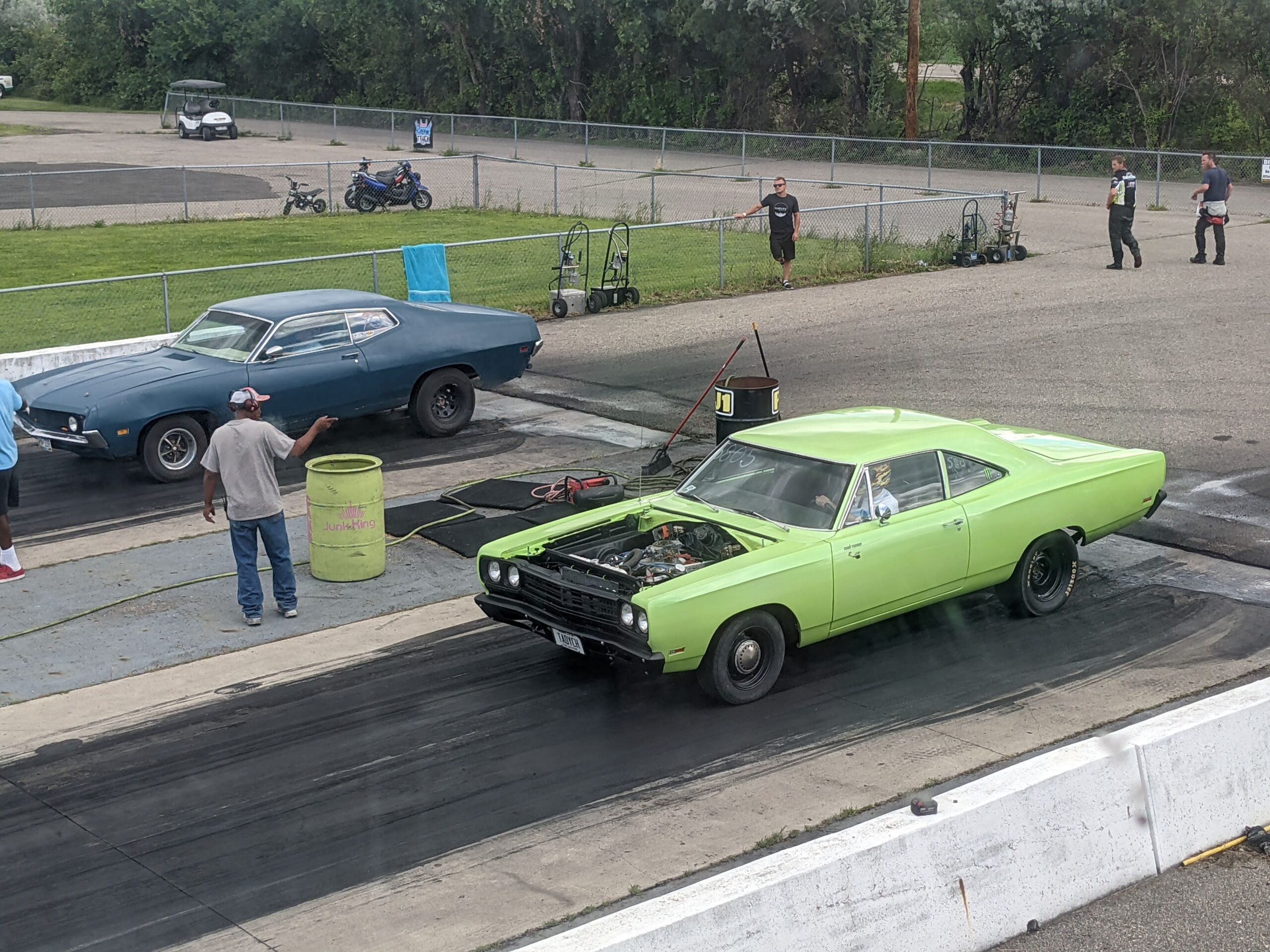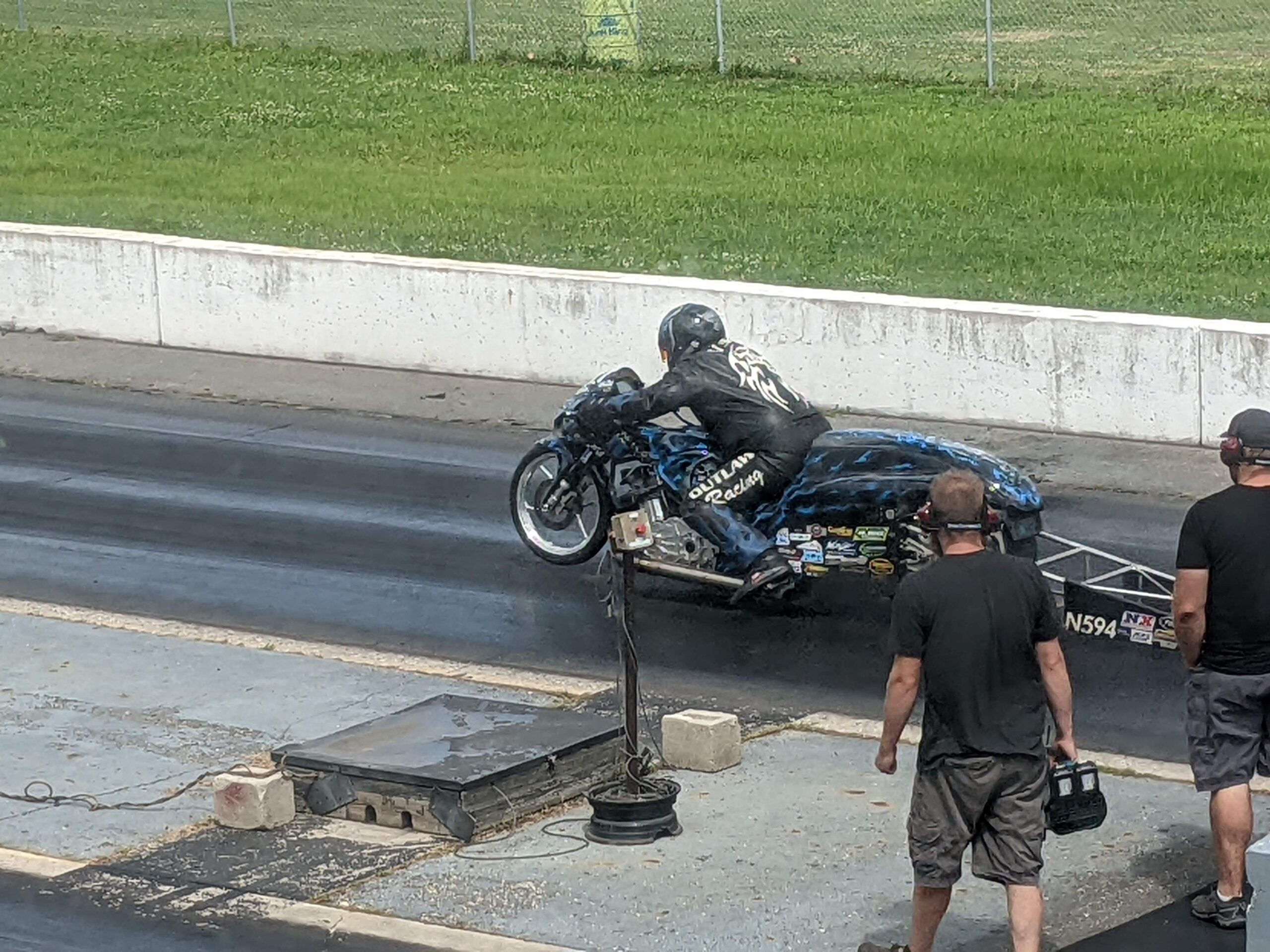All drag race participants are required to follow these rules. Failure to do so can lead to disqualification in races and/or removal from the property. Please respect our staff, facilities, and other races so everyone can have a great race day!
Facility and Staging Lanes
- The speed limit on the return road and any non-race surface is ten (10) miles per hour. Going any faster can put others in danger of a collision, especially with children at the track. Any racers found to be speeding at our facility will be finished running for the day.
- As a courtesy to all the drivers, please get to staging lanes promptly when called. Lanes are closed when the first pair of the class is called to the burnout box. If you show up after your class has run or when your class has not been called, you will be sent back to your pit.
- Stay with your vehicle in the staging lanes. Be ready ahead of time for your pass. If you are not ready to run when called you may be disqualified. The Staging Official’s decision will be final.
- All drivers and crew members entering a restricted area must sign the appropriate Waiver and Liability Releases. Minors under the age of 18 must have a Minor Release Form signed by both parents or legal guardians. In the case of a single parent (by means of divorce, death, or court order) or a legal guardian (by court order), a written notation must be made in the minor release form.
- Payouts will be available at the tower no more than 30 minutes after the final race of each class. Any payouts not claimed by the end of racing on Sunday will be considered abandoned and returned to the track. Payouts will not be mailed.
- Tow vehicles are allowed for Motorcycle/Sled, Super Pro, and Junior Dragsters only. Driver must stay with the tow vehicle at all times.
- No burnouts in the staging lanes or pit areas. No stationary burnouts except in the water box at the signal of a Track Official.
Track Officials and Staff
- The Official has the final say in all cases. The computer is an Official. Verbal and/or physical abuse of Interstate Raceway staff and Track Officials is not acceptable and may result in immediate removal or a ban from the facility.
- The timing tower is off limits to all racers and spectators. If there is an issue, contact the a Track Official in tech or the staging lanes and they will pass your concerns on to the Race Director and let you know how to proceed. Entering the timing tower without being escorted by a Track Official will result in immediate disqualification.
- Time trials are made by class when called by the announcer. Extra time trials are not allowed unless specifically approved by the Race Director.
Cleanup Round
- After all time trials have been completed, the announcer will call for a “cleanup round”. Racers with 1 or 0 time trials in each of their competition classes can report to staging immediately to make a single run down the track.
- Test & Tune is not eligible for a cleanup round because they run throughout the day.
- After the cleanup round is finished, time trials are closed for all groups except Test & Tune.
Entries and Pairing
- You cannot enter two drivers in one vehicle in any single class. You may not switch drivers once eliminations have begun. You must finish eliminations with the vehicle/driver you started with.
- Drivers may earn points in multiple classes. The driver is responsible for being on time for the appropriate class.
- Bye runs will be given at random. Bye run drivers will not be eligible for a second bye run until all remaining competitors have also had a bye. A driver who has the ‘bye run’ must leave the starting line forward, under its own power, to be eligible for a win.
- Race pairings are determined by the Staging Official in the staging lanes and the computer system. All pairings are final. You will race who you are paired with or lose the round by forfeit.
- A random draw will be used for pairing in classes with more than 10 vehicles remaining in the round.
Starting Line and Racing
- In any category where dial-ins are displayed, the racer accepts the dial-in displayed once he/she has PRE-STAGED. No reruns will be granted due to incorrect dial-ins after pre-staging. We encourage racers to verify with the starting line crew (who will verify with the Tower Official) that the correct dial-in is entered BEFORE pre-staging in the event that the scoreboards reflect the wrong number.
- In the event cars have been paired up and called to start and one fails to start or move, the non-offending competitor will be required to take the tree. A vehicle must leave the starting line forward, under its own power, to be eligible for a win.
- If a vehicle has problems before staging at the starting line, it will be given 30 seconds to re-start or correct. Actual time allowed will be at the discretion of the starter, and based on the situation at hand. The starter shall have total discretion of the time allotted to stage a pair of vehicles and activate the tree. Track Officials will make every effort to determine winners on the race track by competition, not by disqualification. The Track Official’s decision will be final.
- Auto-start will be used in all classes. Movement of a “staged” vehicle after the tree is armed may result in a red light, even though it may occur before the tree counts down. Also called a “shallow- stage red” it is not grounds for protest or rerun.
- If you have a vehicle malfunction on the starting line or trigger a red light during staging, the starting line crew will direct you to cruise forward to the end of the track, or you may back out of the starting line area to return to your pit. You will not be allowed to back up and restage for a rerun unless directed by a Track Official.
- Racers who plan to deep stage (meaning to roll forward until the front tire exits the pre-stage beam) need to stage before their competitor whenever possible. We do not delay or hold up the staging process for deep staging because the timing system utilizes an auto-start that begins as soon as the stage beam is set in both lanes. A competitor is also not required to allow their opponent extra time to deep stage. A red light caused by slow staging or deep staging is not grounds for a rerun.
- Power burnouts across the line are not allowed unless directed by a Track Official. One (1) backup is allowed to all competitors, for the purpose of re-positioning their vehicle on the starting pad. The car must always pull forward into a staged position; backing into a staged position is dangerous and strictly prohibited!
- Delay boxes must be removed from the car in all no-box classes. If a delay box is found during a run the competitor is disqualified, and a one-year disqualification with the season forfeit.
- In case of vehicle malfunction, please move your vehicle out of the groove and next to the guard wall to keep fluids off of the racing surface. Tracking fluids everywhere can turn a ten minute cleanup into an hour.
Reruns and Reviews
The following common circumstances are NOT grounds for a rerun, whether in competition or time trials. This list is not exhaustive.
- You went red because your vehicle bumped or rocked out of the stage beam. This is known as a “shallow red” or “default red” and no time will be recorded.
- You went red because you turned your front wheels out of the stage beam.
- You tried to deep stage and failed to stage before your competitor, or failed to stage before the auto-start engaged the tree if running in a single lane.
- You sat in the pre-stage beam for 10 seconds or longer while the other lane was fully staged, causing the system to time you out.
- You wanted cross-talk disabled in your class but did not have a visible N in a circle next to your dial-in, so you went red or were caught off-guard when the lights dropped.
- You pre-staged with an incorrect dial-in shown on the scoreboard.
- A sensor at the 60 foot or 330 foot mark reported incorrectly on the time slip.
- You missed the call to your class and failed to make a run at all.
If you feel that your run requires additional review for a rerun by the Tower Official, take your time slip and report to the Staging Official to ask for a review when they’re available. The Tower Official will be contacted and you may be escorted to the tower for a discussion or data review. Please be patient as races are still actively running.
Only the racer(s) on the time slip can contact Officials about a review or rerun. Do not send your family, friends, etc on your behalf. The only exception is for Junior Dragsters, where Officials will discuss with the child racer’s adult parent or family member.
If you are given a rerun or told that a race will be a rerun, please follow directions from the Staging Official for when and where to line up in the staging lanes for the rerun. If the rerun is for a competition, you cannot change your dial-in.
If you are denied a rerun, please respect the ruling from the Track and Tower Officials. Arguing, fighting, screaming, or other abuse is not tolerated.
Vehicle Number Visibility Requirements
Your racing numbers – including dial-in numbers for bracket racers – must be easily visible to the Tower Official for entry into the system as you pull forward from the bottleneck.
- Vehicle numbers must be at least 8 inches tall for all vehicles except bikes and sleds, which must be 5 inches tall.
- On door cars, numbers must be displayed on the windshield (upper passenger corner) and driver side windows (front or rear). Numbers on the passenger windows are optional but appreciated by the tower 🙂
- On rail dragsters and Junior Dragsters, vehicle numbers must be displayed on the side of the vehicle. Side panels on the wing are appropriate if sizing requirements are met.
- On bikes and sleds, vehicle numbers may be displayed on the windshield, tank, fender, or wheelie bar panels on the left side of the vehicle. Do your best to make them easily visible if there’s not enough space to meet the 5 inch requirement.
- Vehicle numbers may be written in paint marker or tape. We recommend wide markers in white or orange. Fine point paint markers are not visible.
- Vehicle numbers may be displayed using dial-in panel boards, including illuminated boards.
- Vehicle numbers may be vinyl graphics as long as they meet the size and visibility requirements. Patterned or complex fonts are not recommended and we may require you to rewrite your numbers in paint marker for visibility.
- Cross talk will be used in Motorcycle/Sled, Super Pro, Gambler, and King of the Track. If you do not wish to use this feature there must be an approved “N” on your vehicle. See Tech for more information.
If your numbers are not visible to the Tower Official, the starting line crew will flag you to confirm your numbers manually. This slows down the racing program and may lead to your vehicle being turned away from the starting line if it happens repeatedly.
